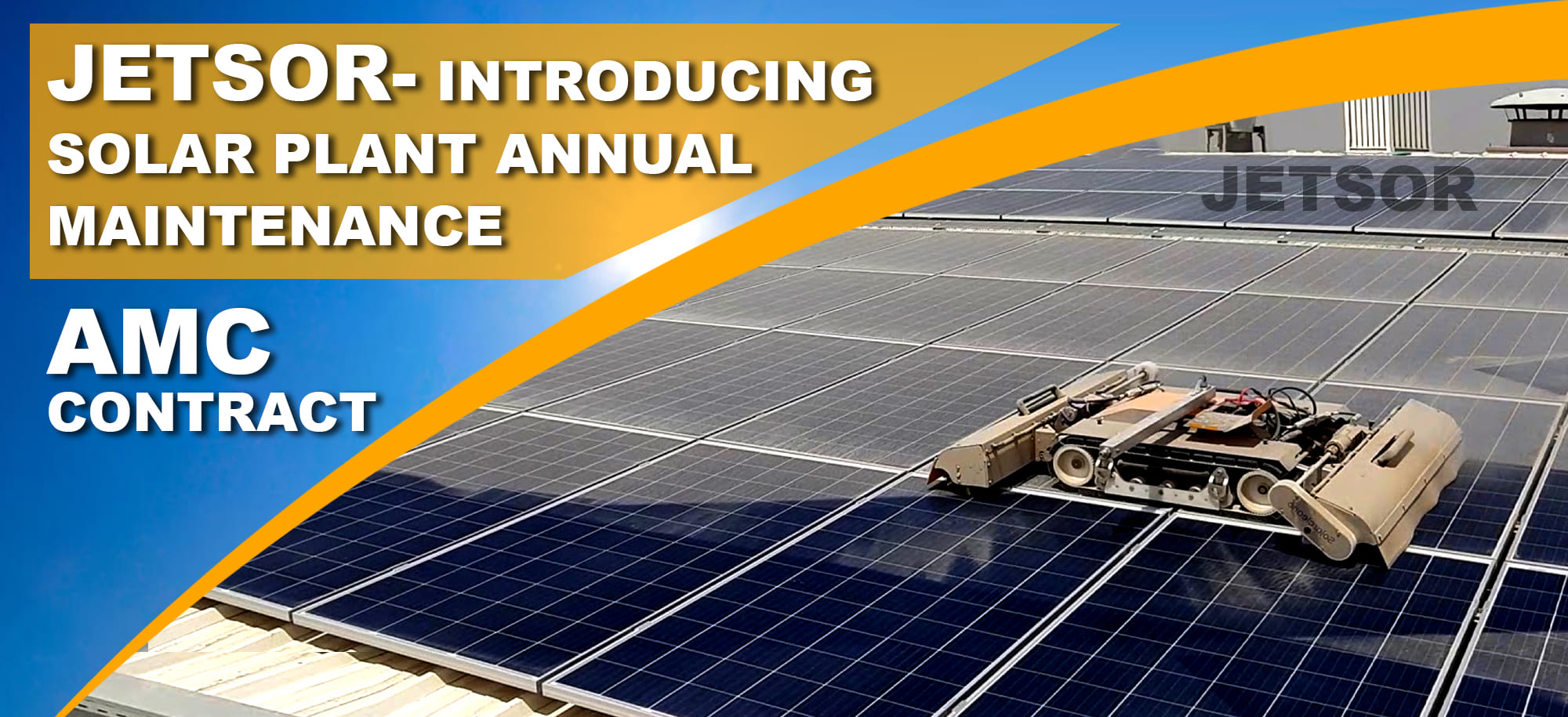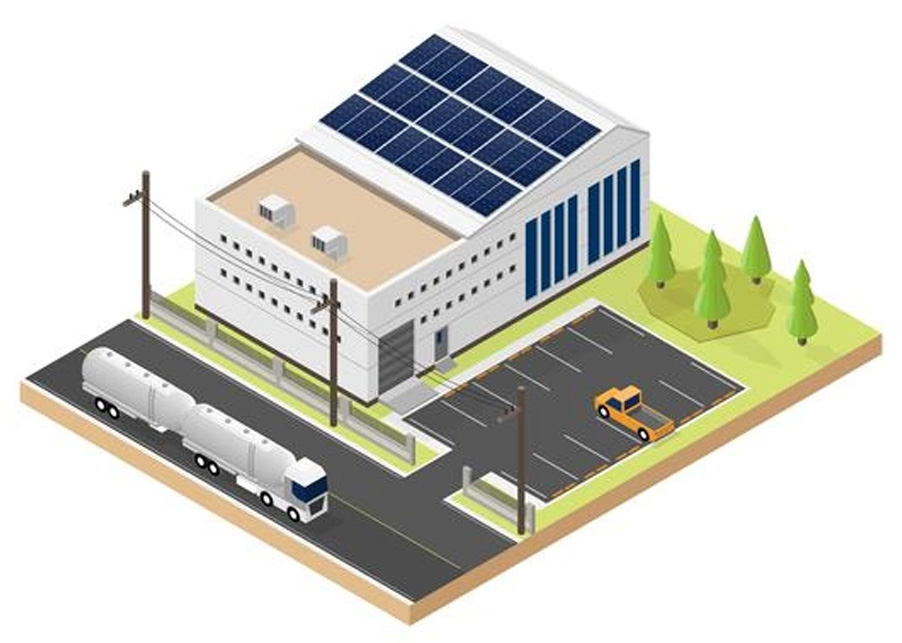

To Maximize Solar Plant Performance, Think Maintenance
Effective and Efficient management of any asset for long term requires regular maintenance.Hence Operations and Maintenance is an integral aspect of Asset Management.
Preventative Vs. Corrective Maintenance
Preventative maintenance is a periodic maintenance of an equipment to anticipate and prevent any breakdown in due course of time.It involves regular servicing,critical safety checks,repairs and so on.This ensuressmooth and efficient functioning and is surely a mandatory one.It’s a proactive approach which offers several benefits-
- Improved reliability and life of the equipment
- Fewer costly repairs and downtimes associated withunexpected equipment failure
- Fewer errors in operationsas a result of equipment working incorrectly
- Reduced health and safety risks
However this type of corrective maintenance is not cost effective,as it can incur unplanned expenses.These expenses can go beyond the cost of repairing or replacing equipment to also include lost productivityand overtime labour costs to meet deadlines.
Preventive maintenance is thus an imperative requirement for the smooth functioning of any asset .Preventive maintenance ensures
long-term system health, corresponding asset value and ensuring that critical warranties on expensive equipment are not voided. However,preventative maintenance alone isn’t enough to maximize long-term solar plant performance and obtain the most value from an asset.
Corrective maintenance issues regularly arise like system outages, utility and non-utility caused. Other common problems include failed termination, external damage, inverter failures with total replacement needed, and failed breakers, fuses or other internal components. These commonly occurring issues are some of the most significant causes of lowered system production, and they typically fall outside the scope of most preventative maintenance packages.
So,both Preventive and Corrective Maintenance are indispensable.
O&M Issues in Solar PV Plants
All of the Solar power cells degrade naturally after a certain time of period, whatever the environment they are planted in. It’s a natural degradation of all kinds of solar cells once they are implanted in operations. Yes it’s completely true that the rate of degradation can vary according to the material used in the manufacturing of solar panels . This is important to take into account in budgeting and investment planning.
The below given table gives you the idea of degradation rates of solar panels/Cells and made of their different materials. It’s clear now from the below given table.
| Types Of Solar PV Modules | Rate of Degradation Per Year(% Percentage) |
|---|---|
| Amorphous Silicon (a-Si) | 0.87 |
| Monocrystalline Silicon (sc-Si) | 0.36 |
| Multicrystalline Silicon (mc-Si) | 0.64 |
| Cadmium telluride (CdTe) | 0.40 |
| Copper Indium gallium diselenide (sc-Si) | 0.96 |
| Concentrator | 1.00 |
Why JETSOR for O&M ?
Jetsor Solar has the industry experience and over 15+ years expertise in the design, installation, operation & maintenance of solar PV energy systems. We have successfully installed a large number of Solar Power projects across India. We additionally look after a number of utility scale solar plants across the Country.
Work with Jetsor to optimize your plant’s power generation and maximize your return on investment.
Solar Power Plant Annual Maintenance Contract (AMC)
In order to increase the plant’s viability & to reduce the risk, our services are structured around, “Flexible, Yet wholesome” concept. Our services offer unmatched freedom & flexibility to choose from the array of services offered
Armed with flexibility, Solar Asset Owners can experience prudent industry solar maintenance practices offered by JETSOR personnel. The diligent process is laid out to record the status of each & every component in the plant for current operation & future reference.
O&M and related services require a more holistic, value-oriented approach that is baked into the system design and procurement stages and continues forward through the life of the project. To get the maximum return on investment, the combination of a well-designed, well-built system and a prudent O&M plan offers the best chance for success.
The operational success of a solar power plant requires that all of the parties involved — system owner, building host, O&M team, and monitoring firm — agree to clearly defined roles. There are many reasonable ways to slice responsibilities, and that’s why all parties need to know their roles and expectations within the larger project maintenance strategy.
From Reactive to Proactive
Developing a proactive, site-specific O&M schedule is the first step to maximizing the long-term value of a new solar project. An ounce of prevention can save you a pound of maintenance costs. The key to doing this effectively is to determine exactly how much preventive service should be done to maximize long-term system value.
Half the battle is knowing what potential issues to look for and expect. Not every solar power system is created equally, and over the years we have seen some patterns emerge in the types of issues that impact system performance, especially among arrays built in the earlier part of the solar boom. An asset owner’s approach to these issues will help determine the long-term profitability of the investment. One of the more common issues we have seen emerge is ground faults: Poor wire management often results in the inverter receiving a ground fault that shuts it down. In order to fix the problem, we send an electrician out to the site to find the ground fault and then replace the fuse on the inverter to get the system back online.
In some situations, bad wire management can lead to ground fault after ground fault, running up long-term bills, and reducing a project’s profitability. This is true for many other O&M issues as well. If a project was not designed and built properly, the asset owners could spend years battling recurring O&M problems. Ultimately, the best way to avoid unnecessary O&M work is to ensure that the system is built right the first time.
The Value of Documentation
Our solar maintenance team will always provide reports upon completion of any maintenance service. This is vital. Effective O&M documentation that details the scope, schedule, and service history of a system can save the manager or owner time and money. Maintenance documentation can be an essential requirement when addressing warranty coverage, and many warranty holders will not provide service without it. Though documentation may require more involvement on the owner or manager’s side, it reduces risk and allows greater scrutiny and protection of your investment.
JETSOR provides AMC service for rooftop systems >= 5kWp. For systems < 5kWp, we can provide breakdown maintenance service. As part of AMC, our services include:
- Preventive and Breakdown maintenance
- Cleaning of solar panels
Clients can customize the AMC contract according to their requirements like frequency of inspection and cleaning visits, period of AMC, etc.
FAQ’s Related Solar Power Plant OEM (Operation & Maintenance)
What maintenance does a Solar PV system require?
The two primary aspects of maintaining a solar PV system are to regularly monitor your system’s performance through the data logger and to clean the panels about 6-10 times in a year. Beyond this, it is advisable to have your installer conduct at least two visits in a year just to check the general health of your system.
What would be the annual maintenance cost for a solar PV system?
The annual maintenance and recurring costs are almost negligible, since there are no moving parts and the input fuel (sunlight) is free. For optimum performance, the system only requires cleaning of modules and basic preventive and corrective maintenance. However, for off-grid systems where batteries are used, the maintenance costs are higher on account of battery replacement every 3-5 years. To ensure high generation and low maintenance cost, regular monitoring through data loggers is highly recommended. Typically, the maintenance costs for smaller Solar PV systems is about 2% of the initial system cost, and for larger systems is about 1% of the initial cost.


